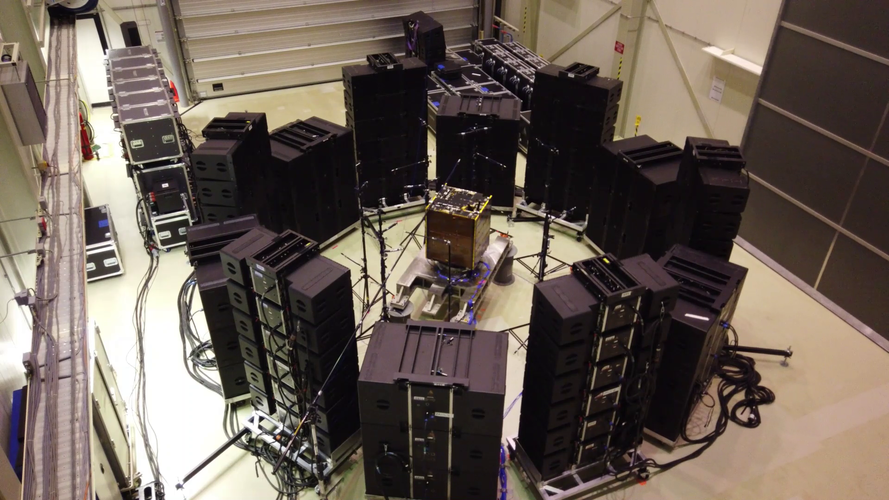Verifying that a satellite will resist the sheer noise of the rocket launching it into orbit is a very important test that every mission must successfully pass.
“Typically satellites are tested inside purpose-built reverberant chambers, such as ESTEC’s own Large European Acoustic Facility sometimes described as the largest and most powerful sound system in Europe,” explains ESA test facility expert Steffen Scharfenberg, overseeing the test campaign together with ESA mechanical engineer Ivan Ngan. A very powerful noise generation system produces a uniform noise field thanks to the reverberation on the thick concrete walls of the chamber.
ESA has initiated a working group comprising of European spacecraft testing entities, industries and academics to study an alternative method, in which the satellite is surrounded by less powerful noise generators but these are placed very close all around the satellite. This method is called the Direct Field Acoustic Noise Test.
This technique is already in use in several locations but there is not yet much experience of it in Europe. Accordingly ESA has just completed a test campaign where the classic method and the new method have been used on a small satellite to compare their results.
Evaluating this new kind of acoustic test for satellites at ESA’s ESTEC Test Centre in the Netherlands, shown via time-lapse.
At first glance, the placing of 36 powerful loudspeakers and 18 subwoofers looks like preparations for a big rock concert – except these speakers are all being placed to face each other in a circle instead of outward. The microphones arranged around the satellite measure the surrounding acoustic field during the test run.
The test took a day and a half to set up, then a day to dismantle, with the actual acoustic test run itself taking place in a matter of a few minutes for passing the qualification level requirement.
The satellite under test is a ‘structural and themal model’ test version of the Proba-V Earth-observing mission, manufactured by QinetiQ Space in Belgium.
The working group is now assessing the obtained test data in detail, to confirm suitability of the method and defines when and how this method could be employed.



 Video:
00:03:01
Video:
00:03:01